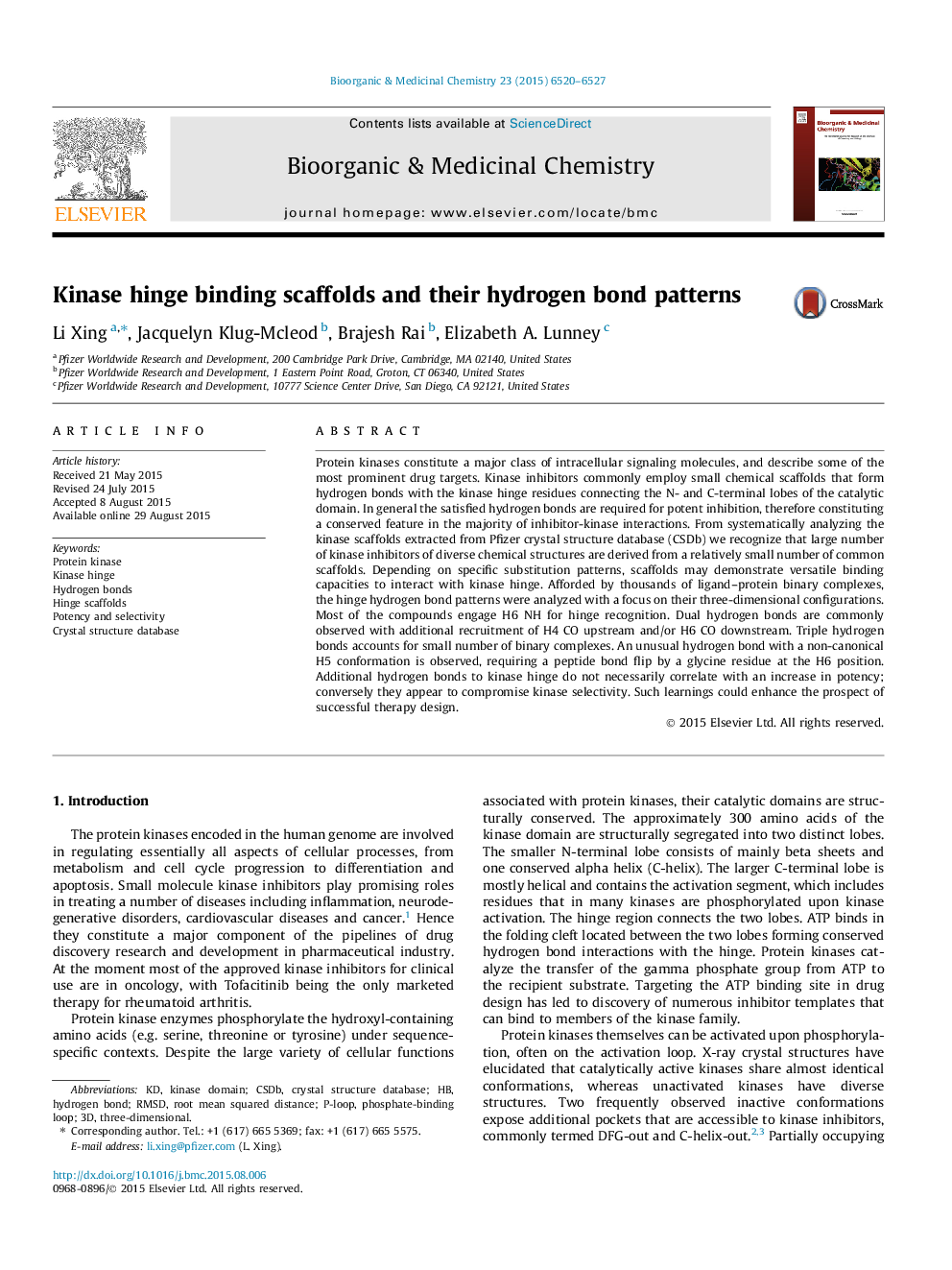| کد مقاله | کد نشریه | سال انتشار | مقاله انگلیسی | نسخه تمام متن |
|---|---|---|---|---|
| 1355525 | 981023 | 2015 | 8 صفحه PDF | دانلود رایگان |
Protein kinases constitute a major class of intracellular signaling molecules, and describe some of the most prominent drug targets. Kinase inhibitors commonly employ small chemical scaffolds that form hydrogen bonds with the kinase hinge residues connecting the N- and C-terminal lobes of the catalytic domain. In general the satisfied hydrogen bonds are required for potent inhibition, therefore constituting a conserved feature in the majority of inhibitor-kinase interactions. From systematically analyzing the kinase scaffolds extracted from Pfizer crystal structure database (CSDb) we recognize that large number of kinase inhibitors of diverse chemical structures are derived from a relatively small number of common scaffolds. Depending on specific substitution patterns, scaffolds may demonstrate versatile binding capacities to interact with kinase hinge. Afforded by thousands of ligand–protein binary complexes, the hinge hydrogen bond patterns were analyzed with a focus on their three-dimensional configurations. Most of the compounds engage H6 NH for hinge recognition. Dual hydrogen bonds are commonly observed with additional recruitment of H4 CO upstream and/or H6 CO downstream. Triple hydrogen bonds accounts for small number of binary complexes. An unusual hydrogen bond with a non-canonical H5 conformation is observed, requiring a peptide bond flip by a glycine residue at the H6 position. Additional hydrogen bonds to kinase hinge do not necessarily correlate with an increase in potency; conversely they appear to compromise kinase selectivity. Such learnings could enhance the prospect of successful therapy design.
Figure optionsDownload as PowerPoint slide
Journal: Bioorganic & Medicinal Chemistry - Volume 23, Issue 19, 1 October 2015, Pages 6520–6527
